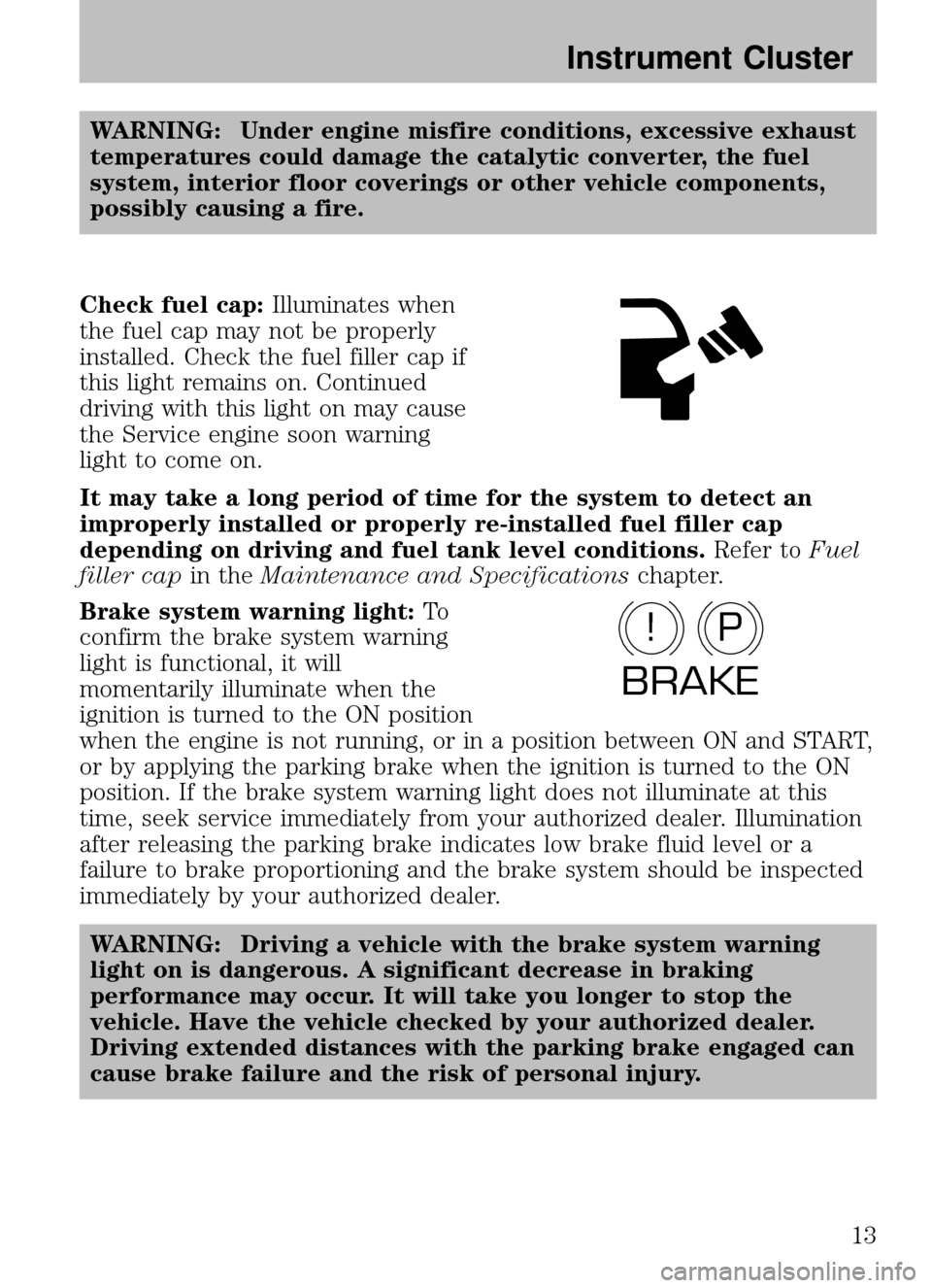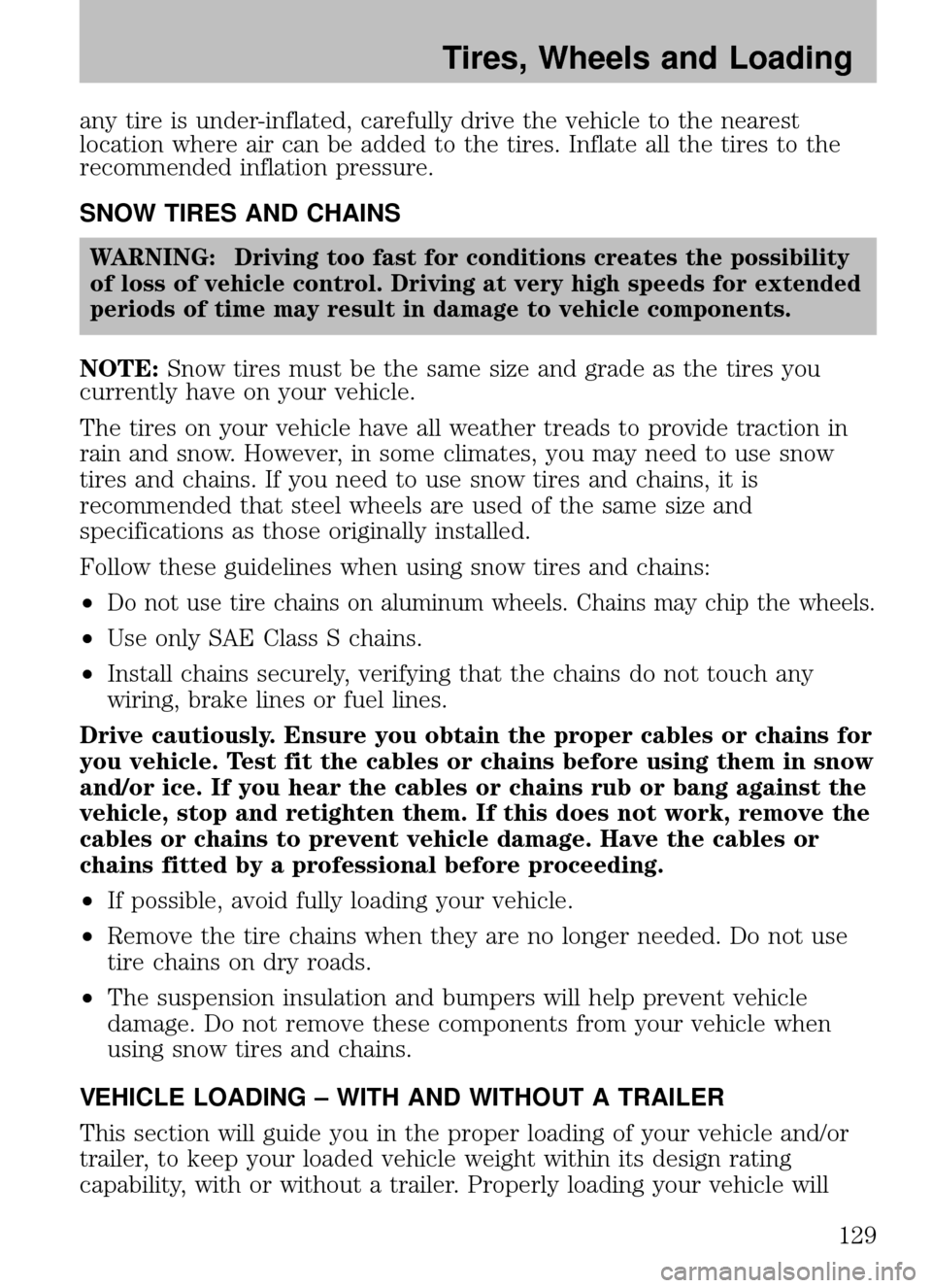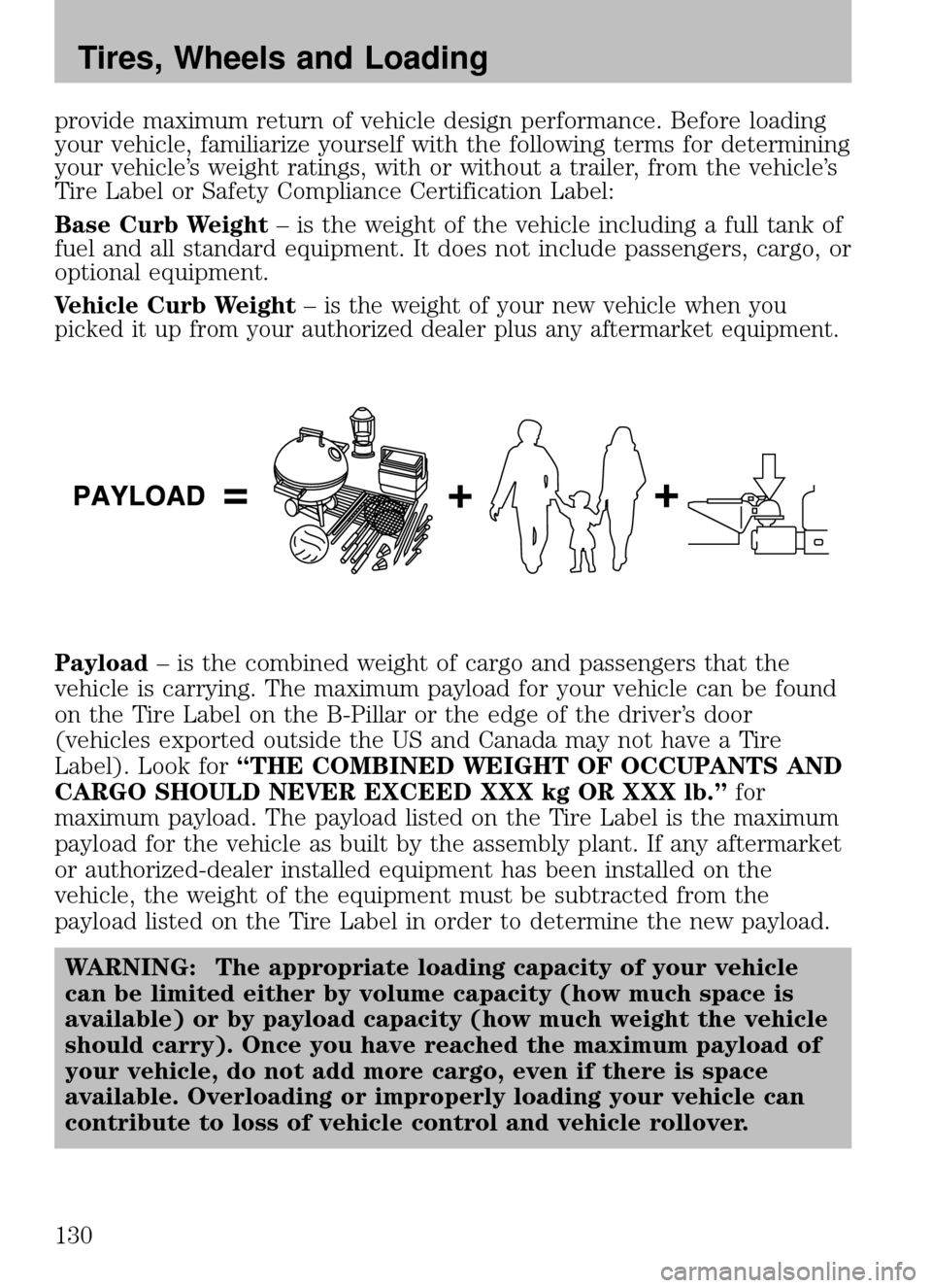Page 3 of 280
Maintenance and Specifications213
Engine compartment 223
Engine oil 227
Battery 233
Engine coolant 235
Fuel information 241
Air filter(s) 258
Maintenance product specifications and capacities 260
Engine data 264
Accessories 268
Index 269
All rights reserved. Reproduction by any means, electronic or mechanical
including photocopying, recording or by any information storage and retrieval
system or translation in whole or part is not permitted without written
authorization from MNAO. MNAO may change the contents without notice and
without incurring obligation.
Copyright © 2007 MNAO
Table of Contents
3
2008 B-Series(mbs)
Owners Guide (post-2002-fmt)
USA (fus)
Page 9 of 280
Vehicle Symbol Glossary
Power Windows
Power Window Lockout
Personal Alarm System
FeatureEngine Oil
Engine CoolantEngine Coolant
Temperature
Do Not Open When HotBattery
Avoid Smoking, Flames,
or SparksBattery Acid
Explosive GasFan Warning
Power Steering FluidMaintain Correct Fluid
LevelMAX MIN
Service Engine SoonEngine Air Filter
Passenger Compartment
Air FilterJack
Check fuel capSpeed Control
Low Tire Pressure
Warning
INFORMATION ABOUT THIS GUIDE
The information found in this guide was accurate at the time of printing.
Mazda may change the contents without notice.
2008 B-Series (mbs)
Owners Guide (post-2002-fmt)
USA (fus)
Introduction
9
Page 13 of 280

WARNING: Under engine misfire conditions, excessive exhaust
temperatures could damage the catalytic converter, the fuel
system, interior floor coverings or other vehicle components,
possibly causing a fire.
Check fuel cap: Illuminates when
the fuel cap may not be properly
installed. Check the fuel filler cap if
this light remains on. Continued
driving with this light on may cause
the Service engine soon warning
light to come on.
It may take a long period of time for the system to detect an
improperly installed or properly re-installed fuel filler cap
depending on driving and fuel tank level conditions. Refer toFuel
filler cap in theMaintenance and Specifications chapter.
Brake system warning light: To
confirm the brake system warning
light is functional, it will
momentarily illuminate when the
ignition is turned to the ON position
when the engine is not running, or in a position between ON and START,
or by applying the parking brake when the ignition is turned to the ON
position. If the brake system warning light does not illuminate at this
time, seek service immediately from your authorized dealer. Illumination
after releasing the parking brake indicates low brake fluid level or a
failure to brake proportioning and the brake system should be inspected
immediately by your authorized dealer.
WARNING: Driving a vehicle with the brake system warning
light on is dangerous. A significant decrease in braking
performance may occur. It will take you longer to stop the
vehicle. Have the vehicle checked by your authorized dealer.
Driving extended distances with the parking brake engaged can
cause brake failure and the risk of personal injury.
P!
BRAKE
2008 B-Series (mbs)
Owners Guide (post-2002-fmt)
USA (fus)
Instrument Cluster
13
Page 15 of 280

Engine coolant temperature:
Illuminates when the engine coolant
temperature is high. Stop the
vehicle as soon as possible , switch off the engine and let cool. Refer to
Engine coolantin theMaintenance and Specifications chapter.
WARNING: Never remove the coolant reservoir cap while the
engine is running or hot.
Foglamps: Illuminates when the
foglamps are turned on. Refer to
Foglamp control in theLights
chapter.
Low fuel: Illuminates when the fuel
level in the fuel tank is at or near
empty. Rrefer to Fuel gaugein this
chapter.
Door ajar: Illuminates when the
ignition is in the ON position and
any door is open.
Overdrive off (if equipped):
Illuminates when the overdrive
function of the transmission has
been turned off. Refer to the
Driving chapter.If the light flashes steadily or does not come on,
have your vehicle serviced as soon as possible, damage to the
transmission could occur.
Four wheel drive low (if
equipped): Illuminates when
four-wheel drive low is engaged.
NOTE: If the light continues to
flash have the system serviced.
Four wheel drive high (if
equipped): Illuminates when
four-wheel drive high is engaged. It
may also illuminate when the 4WD LOW is engaged. Refer to the
Driving chapter for more information.
O/D
OFF
4x4
LOW
4x4
2008 B-Series (mbs)
Owners Guide (post-2002-fmt)
USA (fus)
Instrument Cluster
15
Page 129 of 280

any tire is under-inflated, carefully drive the vehicle to the nearest
location where air can be added to the tires. Inflate all the tires to the
recommended inflation pressure.
SNOW TIRES AND CHAINS
WARNING: Driving too fast for conditions creates the possibility
of loss of vehicle control. Driving at very high speeds for extended
periods of time may result in damage to vehicle components.
NOTE:Snow tires must be the same size and grade as the tires you
currently have on your vehicle.
The tires on your vehicle have all weather treads to provide traction in
rain and snow. However, in some climates, you may need to use snow
tires and chains. If you need to use snow tires and chains, it is
recommended that steel wheels are used of the same size and
specifications as those originally installed.
Follow these guidelines when using snow tires and chains:
•
Do not use tire chains on aluminum wheels. Chains may chip the wheels.
• Use only SAE Class S chains.
• Install chains securely, verifying that the chains do not touch any
wiring, brake lines or fuel lines.
Drive cautiously. Ensure you obtain the proper cables or chains for
you vehicle. Test fit the cables or chains before using them in snow
and/or ice. If you hear the cables or chains rub or bang against the
vehicle, stop and retighten them. If this does not work, remove the
cables or chains to prevent vehicle damage. Have the cables or
chains fitted by a professional before proceeding.
•If possible, avoid fully loading your vehicle.
• Remove the tire chains when they are no longer needed. Do not use
tire chains on dry roads.
• The suspension insulation and bumpers will help prevent vehicle
damage. Do not remove these components from your vehicle when
using snow tires and chains.
VEHICLE LOADING – WITH AND WITHOUT A TRAILER
This section will guide you in the proper loading of your vehicle and/or
trailer, to keep your loaded vehicle weight within its design rating
capability, with or without a trailer. Properly loading your vehicle will
2008 B-Series (mbs)
Owners Guide (post-2002-fmt)
USA (fus)
Tires, Wheels and Loading
129
Page 130 of 280

provide maximum return of vehicle design performance. Before loading
your vehicle, familiarize yourself with the following terms for determining
your vehicle’s weight ratings, with or without a trailer, from the vehicle’s
Tire Label or Safety Compliance Certification Label:
Base Curb Weight– is the weight of the vehicle including a full tank of
fuel and all standard equipment. It does not include passengers, cargo, or
optional equipment.
Vehicle Curb Weight –
is the weight of your new vehicle when you
picked it up from your authorized dealer plus any aftermarket equipment.
Payload – is the combined weight of cargo and passengers that the
vehicle is carrying. The maximum payload for your vehicle can be found
on the Tire Label on the B-Pillar or the edge of the driver’s door
(vehicles exported outside the US and Canada may not have a Tire
Label). Look for “THE COMBINED WEIGHT OF OCCUPANTS AND
CARGO SHOULD NEVER EXCEED XXX kg OR XXX lb.” for
maximum payload. The payload listed on the Tire Label is the maximum
payload for the vehicle as built by the assembly plant. If any aftermarket
or authorized-dealer installed equipment has been installed on the
vehicle, the weight of the equipment must be subtracted from the
payload listed on the Tire Label in order to determine the new payload.
WARNING: The appropriate loading capacity of your vehicle
can be limited either by volume capacity (how much space is
available) or by payload capacity (how much weight the vehicle
should carry). Once you have reached the maximum payload of
your vehicle, do not add more cargo, even if there is space
available. Overloading or improperly loading your vehicle can
contribute to loss of vehicle control and vehicle rollover.
2008 B-Series (mbs)
Owners Guide (post-2002-fmt)
USA (fus)
Tires, Wheels and Loading
130
Page 176 of 280
Fuse/RelayLocation Fuse Amp
Rating Power Distribution Box Description
44 15A* Ignition coil, Capacitor
45A — Not used
45B — Not used
46A — Fuel pump relay, Fuel injectors relay
46B — Not used
47 — Engine fan relay
48 — Starter relay
49 — Not used
50 — Not used
51 — Not used
52 — Not used
53 — Not used
54 — PCM relay
55 — Blower relay
56A — A/C clutch solenoid relay
56B — Not used
* Mini Fuses ** Maxi Fuses
2008 B-Series (mbs)
Owners Guide (post-2002-fmt)
USA (fus)
Roadside Emergencies
176
Page 179 of 280

Fuse/RelayLocation Fuse Amp
Rating Power Distribution Box Description
44 15A* Ignition coil, Capacitor
45A — Not used
45B — Not used
46A — A/C clutch solenoid
46B — Not used
47 — PCM relay
48A — Fuel pump relay, Fuel injectors relay
48B — Fog lamp relay
51 — Not used
52 — Not used
53 — Not used
54 — Not used
55 — Blower relay
56 — Starter relay
* Mini Fuses ** Maxi Fuses
CHANGING THE TIRES
If you get a flat tire while driving:
• do not brake heavily.
• gradually decrease the vehicle’s speed.
• hold the steering wheel firmly.
• slowly move to a safe place on the side of the road.
Note: The tire pressure monitoring system (TPMS) indicator light will
illuminate when the spare is in use. To restore the full functionality of
the monitoring system, all road wheels equipped with tire pressure
monitoring sensors must be mounted on the vehicle.
Have a flat serviced by an authorized dealer in order to prevent damage
to the TPMS sensor, refer to Changing tires with TPMSin theTires,
Wheels and Loading chapter. Replace the spare tire with a road tire as
soon as possible.
WARNING: The use of tire sealants may damage your Tire
Pressure Monitoring System and should not be used.
2008 B-Series (mbs)
Owners Guide (post-2002-fmt)
USA (fus)
Roadside Emergencies
179